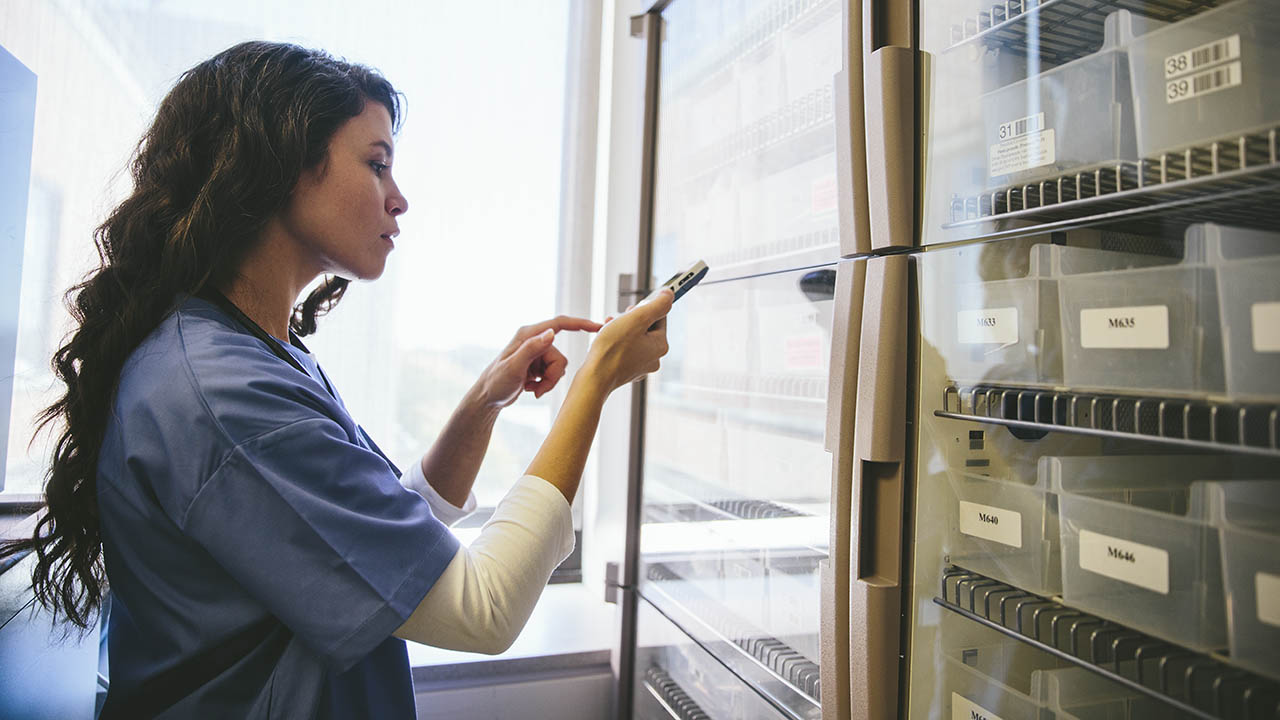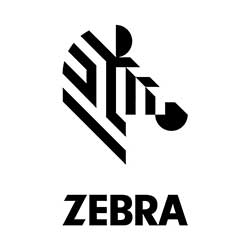Transform retail operations with Zebra’s retail technology solutions, featuring hardware and software for improving inventory management and empowering teams.
Streamline operations with Zebra’s healthcare technology solutions, featuring hardware and software to improve staff collaboration and optimise workflows.
Enhance processes with Zebra’s manufacturing technology solutions, featuring hardware and software for automation, data analysis, and factory connectivity.
Zebra’s transportation and logistics technology solutions feature hardware and software for enhancing route planning, visibility, and automating processes.
Zebra's hospitality technology solutions equip your hotel and restaurant staff to deliver superior customer and guest service through inventory tracking and more.
Zebra's market-leading solutions and products improve customer satisfaction with a lower cost per interaction by keeping service representatives connected with colleagues, customers, management and the tools they use to satisfy customers across the supply chain.
Empower your field workers with purpose-driven mobile technology solutions to help them capture and share critical data in any environment.
Zebra's range of mobile computers equip your workforce with the devices they need from handhelds and tablets to wearables and vehicle-mounted computers.
Zebra's desktop, mobile, industrial, and portable printers for barcode labels, receipts, RFID tags and cards give you smarter ways to track and manage assets.
Zebra's 1D and 2D corded and cordless barcode scanners anticipate any scanning challenge in a variety of environments, whether retail, healthcare, T&L or manufacturing.
Zebra's extensive range of RAIN RFID readers, antennas, and printers give you consistent and accurate tracking.
Choose Zebra's reliable barcode, RFID and card supplies carefully selected to ensure high performance, print quality, durability and readability.
Zebra's location technologies provide real-time tracking for your organisation to better manage and optimise your critical assets and create more efficient workflows.
Zebra's rugged tablets and 2-in-1 laptops are thin and lightweight, yet rugged to work wherever you do on familiar and easy-to-use Windows or Android OS.
With Zebra's family of fixed industrial scanners and machine vision technologies, you can tailor your solutions to your environment and applications.
Zebra’s line of kiosks can meet any self-service or digital signage need, from checking prices and stock on an in-aisle store kiosk to fully-featured kiosks that can be deployed on the wall, counter, desktop or floor in a retail store, hotel, airport check-in gate, physician’s office, local government office and more.
Discover Zebra’s range of accessories from chargers, communication cables to cases to help you customise your mobile device for optimal efficiency.
Zebra's environmental sensors monitor temperature-sensitive products, offering data insights on environmental conditions across industry applications.
Enhance frontline operations with Zebra’s AI software solutions, which optimize workflows, streamline processes, and simplify tasks for improved business outcomes.
Zebra Workcloud, enterprise software solutions boost efficiency, cut costs, improve inventory management, simplify communication and optimize resources.
Keep labour costs low, your talent happy and your organisation compliant. Create an agile operation that can navigate unexpected schedule changes and customer demand to drive sales, satisfy customers and improve your bottom line.
Drive successful enterprise collaboration with prioritized task notifications and improved communication capabilities for easier team collaboration.
Get full visibility of your inventory and automatically pinpoint leaks across all channels.
Reduce uncertainty when you anticipate market volatility. Predict, plan and stay agile to align inventory with shifting demand.
Drive down costs while driving up employee, security, and network performance with software designed to enhance Zebra's wireless infrastructure and mobile solutions.
Explore Zebra’s printer software to integrate, manage and monitor printers easily, maximising IT resources and minimising down time.
Make the most of every stage of your scanning journey from deployment to optimization. Zebra's barcode scanner software lets you keep devices current and adapt them to your business needs for a stronger ROI across the full lifecycle.
RFID development, demonstration and production software and utilities help you build and manage your RFID deployments more efficiently.
RFID development, demonstration and production software and utilities help you build and manage your RFID deployments more efficiently.
Zebra DNA is the industry’s broadest suite of enterprise software that delivers an ideal experience for all during the entire lifetime of every Zebra device.
Advance your digital transformation and execute your strategic plans with the help of the right location and tracking technology.
The Zebra Aurora suite of machine vision software enables users to solve their track-and-trace, vision inspection and industrial automation needs.
Zebra Aurora Focus brings a new level of simplicity to controlling enterprise-wide manufacturing and logistics automation solutions. With this powerful interface, it’s easy to set up, deploy and run Zebra’s Fixed Industrial Scanners and Machine Vision Smart Cameras, eliminating the need for different tools and reducing training and deployment time.
Aurora Imaging Library™, formerly Matrox Imaging Library, machine-vision software development kit (SDK) has a deep collection of tools for image capture, processing, analysis, annotation, display, and archiving. Code-level customisation starts here.
Aurora Design Assistant™, formerly Matrox Design Assistant, integrated development environment (IDE) is a flowchart-based platform for building machine vision applications, with templates to speed up development and bring solutions online quicker.
Designed for experienced programmers proficient in vision applications, Aurora Vision Library provides the same sophisticated functionality as our Aurora Vision Studio software but presented in programming language.
Aurora Vision Studio, an image processing software for machine & computer vision engineers, allows quick creation, integration & monitoring of powerful OEM vision applications.
Adding innovative tech is critical to your success, but it can be complex and disruptive. Professional Services help you accelerate adoption, and maximise productivity without affecting your workflows, business processes and finances.
Zebra's Managed Service delivers worry-free device management to ensure ultimate uptime for your Zebra Mobile Computers and Printers via dedicated experts.
Find ways you can contact Zebra Technologies’ Support, including Email and Chat, ask a technical question or initiate a Repair Request.
Zebra's Circular Economy Program helps you manage today’s challenges and plan for tomorrow with smart solutions that are good for your budget and the environment.

This is the Real Reason Why Healthcare Systems Need to Invest in “Track and Trace” Technologies Right Now
Over the past few months, there have been many discussions within the healthcare community about “track and trace” capabilities. You may have heard officials frequently emphasize in public briefings and media coverage how they are:
1. Tracking availability of hospital beds and ventilators to gauge how fast COVID-19 is spreading through communities and also monitoring healthcare system capacity.
2. Tracing the high-risk contacts of COVID-19 patients to initiate isolation, testing and treatment in an effort to contain further spread.
Behind the scenes, though, the conversations around “track and trace” capabilities are also focused on inventory and asset management.
Why?
As three of Zebra’s leading healthcare experts recently explained in a roundtable discussion, hospitals, clinics and labs that can track supply levels in real time and trace the location of their inventory and equipment at all times can improve asset sourcing, availability and utilization. This, in turn, helps to increase healthcare systems’ agility, visibility into their capacity and subsequent facility planning, especially in times of crisis when patient volume surges and resources may be strained. The insights garnered via track and trace technology solutions can also enable healthcare facilities to better manage recalls and stock rotation on a routine basis to avoid the accidental use of potentially harmful or expired medical devices and drugs.
LISTEN TO THE ROUNDTABLE DISCUSSION:
The “Track and Trace” Solution That Every Healthcare System Should Be Investing in Right Now
COVID-19 Isn’t the Only Thing Healthcare Systems Have to Track from a “Care Capacity” Perspective
Global pandemics aren’t the only times when basic supplies and critical life-saving equipment alike are in high demand, as Zebra APAC Healthcare Practice Lead James Woo recently reminded us. Nor is COVID-19 the only event to strain patient care – and staffing – capacity. Most healthcare systems find it challenging to strike the right inventory balance, monitor the movements of patients and equipment location and manage overall resource utilization on a daily basis.
Truth be told, the benefits of real-time locations systems (RTLS) have long been considered in clinical settings by healthcare administrators seeking ways to better manage staff, patients, supplies, equipment and facilities. Some hospitals like Medical Park Hospitals Group (Turkey), Sanatorio Finochietto (Argentina) and Aarhus University Hospital (Denmark) started implementing radio frequency identification (RFID) or Bluetooth® Low Energy technologies as early as 2014 to gain visibility into asset utilization and, more specifically, the actionable insights needed to improve resource availability.
Since many more healthcare systems have expressed interest in implementing RTLS technologies in recent months, we asked James Woo (who was previously CIO of a hospital group in Singapore) to join Zebra’s Chief Nursing Informatics Officer, Rikki Jennings, and Zebra’s Healthcare Lead in Australia/New Zealand, Elizabeth Miller (who are both registered nurses) to shed some light on:
- The immediate impact that the right real-time location solution can have on inventory and asset management and, thus, healthcare capacity, patient safety and care quality.
- The best practices, process enhancements and technology platforms that have proven most effective in improving inventory and asset management capabilities.
-The progress being made by healthcare facilities to improve inventory and asset visibility, availability and utilization.
- How the right staff training and subsequent “elbow support” mechanisms can improve the return on investment for RFID and Bluetooth® Low Energy track and trace solutions used for inventory and asset management workflows.
If you’re responsible for managing your care facility’s staff or resource capacity in any way, we highly encourage you to listen to this 20-minute roundtable discussion now (if you haven’t already):
The “Track and Trace” Solution That Every Healthcare System Should Be Investing in Right NowThe “Track and Trace” Solution That Every Healthcare System Should Be Investing in Right Now
In Case You Missed It
James Woo recently spoke about how RTLS can be also applied within healthcare supply chains to track and trace inventory as it moves from manufacturers’ factories to care facilities. Read his post now.

Zebra’s “Your Edge” Blog Team
The “Your Edge” Blog Team is comprised of content curators and editors from Zebra’s Global PR, Thought Leadership and Advocacy team. Our goal is to connect you with the industry experts best-versed on the issues, trends and solutions that impact your business. We will collectively deliver critical news analysis, exclusive insights on the state of your industry, and guidance on how your organization can leverage a number of different proven technology platforms and strategies to capture your edge.
Zebra Developer Blog
Zebra Developer Blog
Are you a Zebra Developer? Find more technical discussions on our Developer Portal blog.
Zebra Story Hub
Zebra Story Hub
Looking for more expert insights? Visit the Zebra Story Hub for more interviews, news, and industry trend analysis.
Search the Blog
Search the Blog
Use the below link to search all of our blog posts.
Most Recent
Legal Terms of Use Privacy Policy Supply Chain Transparency
ZEBRA and the stylized Zebra head are trademarks of Zebra Technologies Corp., registered in many jurisdictions worldwide. All other trademarks are the property of their respective owners. ©2025 Zebra Technologies Corp. and/or its affiliates.






